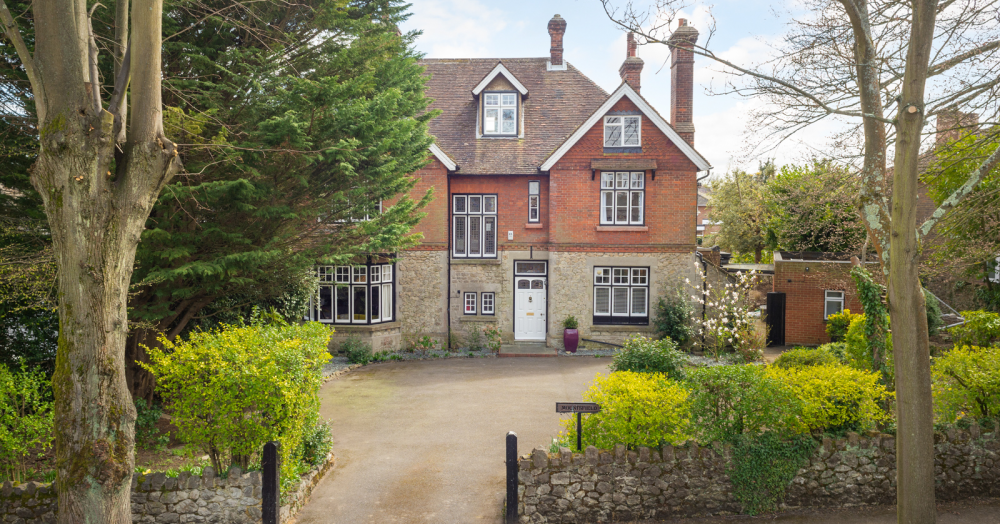Full of charm and character, Victorian properties and their features are always desirable. We take an in depth look at each one and the stories behind them.
Do you live in a Victorian property?
Perhaps you do. Perhaps you don't know if you do or not?
Victorian architecture is prominent in most major towns across the UK.
Properties of this type are named Victorian because they were built during the reign of Queen Victoria between 1837 and 1901.
Due to intense economic prosperity, there was significant growth in personal wealth.
This led to a growth in housing needs, and there was a considerable surge in building and infrastructure.
With various industries growing across the country, homes were needed for the workers.
Ranging from '2 up 2 down' terraced properties built for the workers' families to impressive mansions for the upper class.
The middle classes would have lived in the large Victorian terraced homes set over multiple floors and often included a basement/cellar and attic rooms to house the few staff members needed to run these homes.
What is clear from properties during this period are the trends and styles. Whether you were working-class or aristocracy, almost all properties had cornice, for example, but with varying levels of 'fanciness' depending on your social standing.
Despite these properties being built so long ago, the key features of those times are still very popular today.
Owning a home with period features is often very desirable and will almost always be mentioned in the sales brochure when a period property comes on to the market.
So what are the top features of a Victorian home?
Entrance hallways
The first impression of the home would show the wealth and importance of the homeowner. They were large, often with a tiled floor (you know the geometric patterns) and stained glass windows in the door.
Stained glass was used because it reflected the windows in the churches (if it is good enough for Jesus, it was good enough for the Victorian Middle classes). Also, it allowed light to enter the hall inside whilst still giving privacy. Often these tiled entrances were found in middle-class townhouses, with the upper-class mansions having even more grandeur. Whilst the terraces of 2 bedroom homes have a simple vestibule entrance.
Windows
The windows in a Victorian home are almost always huge. They used sash windows and often had a bay from the front reception room. There were no electric lights in Victorian times, so the large windows allowed light to fill the homes during the days.
Photo Credit: Sandersons UK
Ceilings
Another key feature is the ceilings. They were high. Really high!
This gave the illusion of space in the rooms, and you can only really have high windows if you have high ceilings.
But, the ceilings were not left bare. They were decorated using plaster cornice (the point where the walls and the ceiling meets) and, if there was a central ceiling light, there would be a ceiling rose. The quality of this plasterwork and its intricacy show the status of the property and its occupants.
Again, the smaller terraces still had cornice, but it would be plain and simple. Where the upper classes would probably have gold leaf and very ornate patterns.
Photo Credit: Sandersons UK
Roofs & brickwork
You may not have thought much about the brickwork on a property, but, never wanting to miss an opportunity to show their importance, Victorian homes were built with ornate brickwork in mind too. Roofs were built using slate tiles with terracotta ridge tiles, and ornate finials were placed at the ends. And at the gable ends, decorated barge boards were used. Again, the level of intricacy in the decorations was directly related to the stature of the homeowner.
Fireplaces
Fireplaces are now seen as an attractive feature in a room. But these fireplaces were the only source of heat in a Victorian home, which is why they were placed in multiple rooms throughout the house. Again the wealthy would have marble mantlepieces, whereas the working class would have a wooden mantle.
Photo Credit: Sandersons UK
Baths
The Victorian period saw the first time that a room was dedicated to washing. Until this point, a quick wash at a sink was all that was needed, or a tin bath would be placed in front of the fire. When a bath had a place to be permanent, the tin bath would be put into a stand that had 'feet' - this is where the clawfoot bath originated.
Again this would be a sign of wealth because a maid would need to heat water up in copper pans on the fire and carry them to the bath to fill it, which is only possible if you actually HAD a maid!
Photo Credit: Sandersons UK
The Victorian period was one of hard work and aspirations.
The workers aspired to live in large terraced homes.
The middle classes aspired to live in mansions.
Showing off your personal wealth was to show that you were important in society.
I suppose it is really nothing more than "keeping up with the Jones's". Everyone wanted to show that they had done well for themselves, and they used their homes to show that.
And, over 100 years on, we can call these beautiful buildings our homes, whilst also having central heating and plumbing!








